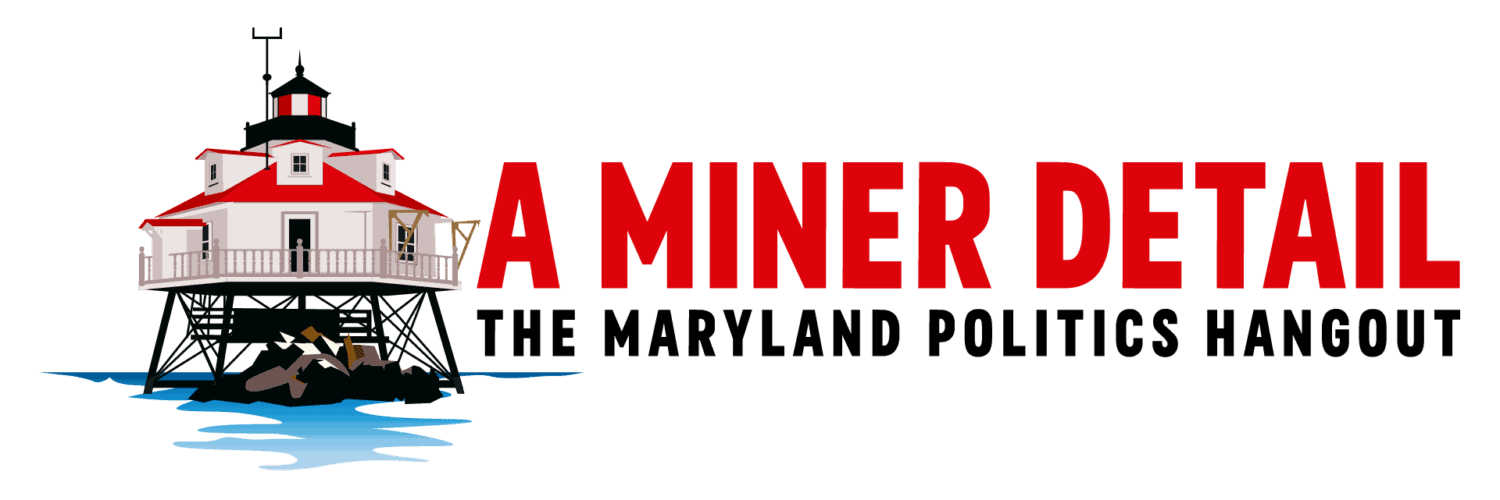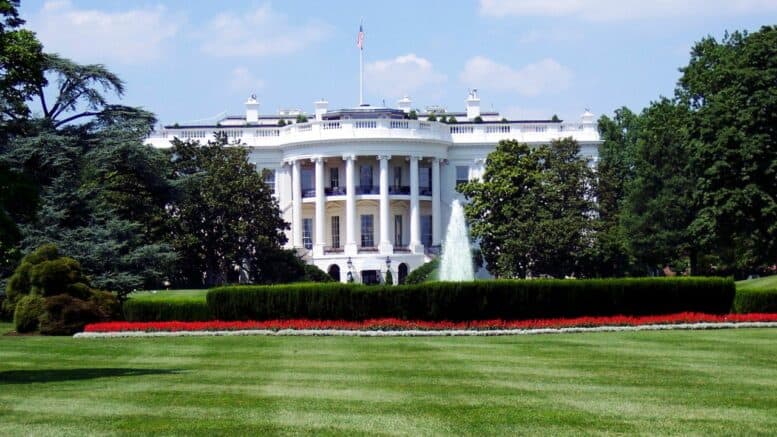As the 2024 presidential election approaches, pundits, journalists, and candidates are flooding the airwaves with calls for “serious policy discussions.”
But what exactly is public policy, how is it created, and what should we expect when politicians discuss it?
For many Americans, these questions remain unanswered, even as they are told public policy will shape their lives and the nation’s future.
In this article, I aim to demystify public policy, explaining what it is, how it’s crafted, and how citizens can engage in meaningful, nonpartisan discussions about it.
By understanding the public policymaking process, we can better evaluate the platforms of Vice President Kamala Harris, the Democratic nominee for president in 2024, and former President Donald Trump, the Republican nominee, and all future candidates.
What is Public Policy?
At its core, public policy is:
- A system of laws;
- Regulations;
- Actions and priorities set by government institutions to address society’s needs and challenges.
Public policy encompasses a wide range of issues, from healthcare and education to national security and environmental protection. It includes laws passed by Congress, executive presidential actions, administrative regulations, court rulings, and various government agencies’ implementation of these policies.
Public policy is fundamentally about problem-solving – addressing specific societal issues, such as economic inequality, climate change, or public health crises, by creating a framework for action.
This framework guides the behavior of individuals, businesses, and government entities per the public interest.
The Process of Creating Public Policy
Policymakers do not create public policy in a vacuum.
Public policy results from a complex, multi-stage process involving various stakeholders, including but not limited to:
- Elected officials;
- Government agencies;
- Special interest groups, and;
- You and I – the general public.
Understanding the process of creating public policy is central to appreciating how policies are developed and why certain ideas gain traction while others do not.
Step 1: Setting an Agenda
The first step in the policymaking process is setting a public policy agenda.
What do you want to make better, and who will do it?
During this stage of the public policymaking process, problems and issues are identified and prioritized for government action.
Problems that receive the most attention from the public, media, and political leaders are more likely to be on the policy agenda. Several factors, including public opinion, media coverage, and the interests of powerful groups, influence a public policy agenda.
For example, in the wake of a natural disaster, an agenda around climate change could prompt calls for new environmental regulations.
Step 2: Policy Formulation
Once policymakers decide on an agenda, the next step in public policymaking is to formulate the policy.
This stage is where potential solutions are developed and debated. Policy formulation involves drafting proposals, analyzing options, and consulting with experts and stakeholders.
During this stage, policymakers evaluate policy ideas based on feasibility, costs, benefits, and potential impact.
For example, if the issue is healthcare, policymakers might consider various proposals, such as expanding Medicare, introducing public health insurance options, or implementing tax incentives for private insurance.
Policy formulation often involves negotiation and compromise as various stakeholders push for solutions that align with their interests and values. This is the stage of the policymaking process where the art of politics comes into play, as elected officials work to build coalitions and gather support for their preferred policies.
Step 3: Policy Adoption
After policymakers formulate a policy proposal, the appropriate government body may adopt it. Policy adoption can take various forms, depending on the government level and the policy’s nature.
At the federal level, it might involve passing a law through Congress, the president issuing an executive order, or an agency adopting new regulations.
Intense political debate and lobbying often mark the adoption stage of the public policymaking process.
Various special interest groups want to influence the outcome.
For example, a bill to regulate carbon emissions might be opposed by industry groups while receiving support from environmental organizations.
Successful policy adoption requires political will, strategic timing, and, often, the ability to navigate the complexities of the legislative process.
Even after adopting a policy, it may face challenges, such as legal disputes or efforts to repeal or modify it.
Step 4: Policy Implementation
Once a policy has been adopted, the focus then shifts to implementation.
This is the stage of the public policymaking process where government agencies responsible for interpreting and enforcing the policy’s provisions put the policy into action.
Policy implementation involves developing detailed regulations, allocating resources, and ensuring compliance with the new rules. The implementation phase is sometimes lengthy and requires coordination among multiple government agencies.
For example, when federal education policy is adopted, individual states will likely have to adjust their curricula, train teachers, and develop new assessment tools.
Public policy success often depends on practical implementation, as poorly implemented policies can fail to achieve their intended outcomes.
Step 5: Policy Evaluation
Evaluating public policy is the final step in the process.
This involves assessing the policy’s effectiveness in achieving its goals and identifying unintended consequences.
Policy evaluation provides valuable feedback that can inform future policy decisions.
Evaluation can take various forms, including statistical analysis, case studies, and public surveys.
For example, after implementing a new tax policy, our federal government might analyze its impact on revenue generation, economic growth, and income distribution.
After evaluating the new public policy, policymakers may decide to revise, expand, or repeal it. Continuous evaluation helps ensure policies remain responsive to changing circumstances and societal needs.
What the American People Expect from Presidential Candidates
Understanding the policymaking process is crucial for evaluating presidential candidates’ platforms.
As voters, we should expect candidates to articulate clear, evidence-based policies that address our country’s most critical and pressing issues.
However, we, the voters, must also recognize the limits of what an American president can achieve unilaterally.
A Presidential Candidate’s Vision and Agenda-Setting
A presidential candidate’s vision is a critical component of their platform.
Their vision sets the tone for their policy agenda and outlines the most critical issues.
For example, Vice President Kamala Harris will undoubtedly emphasize freedom, economic justice, border security, and climate action.

At the same time, former President Trump is likely to focus on sustaining tax cuts for wealthy Americans and limiting or restrictive reproductive freedoms for women.
As voters, we should evaluate whether a candidate’s vision aligns with our own priorities and whether their agenda is comprehensive and realistic.
When accessing candidates, you could ask:
- Does the candidate address the country’s full range of issues?
- Do they focus narrowly on a few topics?
- Are they proposing new solutions or recycling old ideas?
Presidential Policy Proposals
In addition to setting an agenda, presidential candidates should offer specific policy proposals.
These proposals should be detailed and backed by evidence rather than vague promises, lofty rhetoric, or marketing slogans.
For example, if a candidate proposes tax cuts, they should explain how they will fund these cuts and their impact on the economy and public services.
We, the voters, should scrutinize the feasibility of their proposals, asking:
- Are the candidates’ policies grounded in reality or based on wishful thinking?
- Do their policies consider the potential trade-offs and unintended consequences?
A well-crafted public policy proposal should include a clear plan for implementation and a strategy for overcoming potential obstacles.
A Presidential Candidate’s Political Strategy When Pushing New Public Policy Ideas
Even the best policy proposals can fail if they lack political support.
Americans should consider and evaluate a presidential candidate’s political strategy for advancing their policies, including their ability to build and bolster coalitions, negotiate with Congress, and work with state and local governments.
Suppose a presidential candidate proposes significant healthcare reform.
In that case, candidates and their campaigns should outline how they plan to navigate the legislative process and gain the support of key stakeholders, such as healthcare providers, insurers, and advocacy groups.
Voters should be wary of candidates who promise sweeping policy changes without a clear strategy. Grandiose plans that lack political viability are unlikely to result in meaningful policy change.
How Presidential Candidates Respond to Public Opinion
Finally, Americans should consider how presidential candidates respond to public opinion.
Successful public policy must be practical and supported by the public. Candidates should be willing to engage with us, the people, listen to our concerns, and adjust their policies in response to feedback.

For example, if public opinion shifts in favor of stronger environmental protections, a responsive presidential candidate should be willing to update their policy proposals accordingly.
Conversely, a candidate who ignores public opinion or panders to extreme views may struggle to build the broad support needed for successful policy implementation.
Engaging in Nonpartisan Policy Discussions
Engaging in nonpartisan policy discussions is a challenge in today’s polarized political environment.
Nevertheless, understanding policymaking can help us have more informed and constructive conversations.
Below is a roadmap for you to follow.
Focus on Issues, Not Ideology
When discussing public policy, focus on the specific issues rather than getting caught up in ideological battles.
Instead of debating whether government intervention is inherently good or bad, you could try evaluating the merits of individual policies based on their potential impact.
This approach allows us to consider various policy solutions and find common ground with different ideological perspectives.
Always Seek Evidence-Based Solutions
Effective public policy should be grounded in evidence, not rhetoric.
When evaluating policy proposals, we should look for data, research, and expert analysis that support the proposed solutions. This ensures that public policy is based on reality rather than wishful thinking or partisan talking points.
Let’s say a presidential candidate proposes a sweeping new education policy. We should seek evidence that the proposed approach has succeeded in similar contexts.
And we should also be open to revising our views in light of new evidence rather than clinging to preconceived notions.
Respect Diverse Perspectives
Public policy affects all Americans, and different people may have different views on what policies they think are best.
We should aim to respect diverse perspectives and recognize that reasonable people can disagree on complex issues.
Engaging in respectful dialogue with those with differing views can help us better understand the trade-offs and potential consequences of different policies. It also allows us to build coalitions and find compromises that can lead to more effective and sustainable policy solutions.
Empowering Citizens Through Understanding
As the 2024 election approaches, understanding the intricacies of public policy is more important than ever.
Citizens informed about the policymaking process are better equipped to evaluate presidential candidates’ proposals, engage in meaningful discussions, and advocate for policies that align with their values and interests.
Public policy is not just a series of abstract decisions made in Washington, D.C.; it is the framework that shapes our daily lives – from the quality of our healthcare and education to the safety of our communities and the strength of our economy.
By demystifying the policymaking process, we can empower ourselves to participate more actively in our democratic republic and hold the candidates and elected officials accountable for their proposed and implemented policies.
This election season, let’s set a goal to move beyond partisan rhetoric and focus on the substance of the policies that the candidates and the respective political parties debate.
We should demand detailed, evidence-based proposals from our candidates and engage in respectful, informed discussions with our fellow citizens. By doing so, we can ensure that public policy truly serves the public interest and that our government remains responsive to the needs and aspirations of all Americans.
Our republic’s strength depends on an informed electorate’s active participation. Understanding the process of creating public policy empowers all Americans to make informed decisions at the ballot box.

